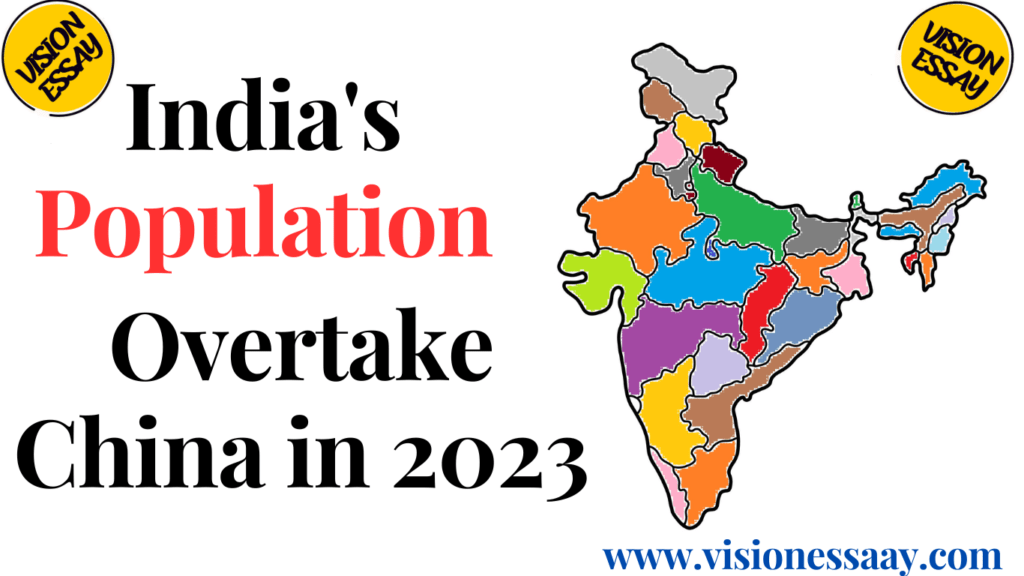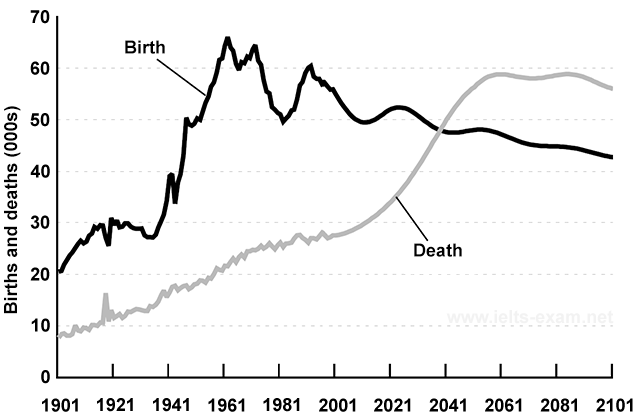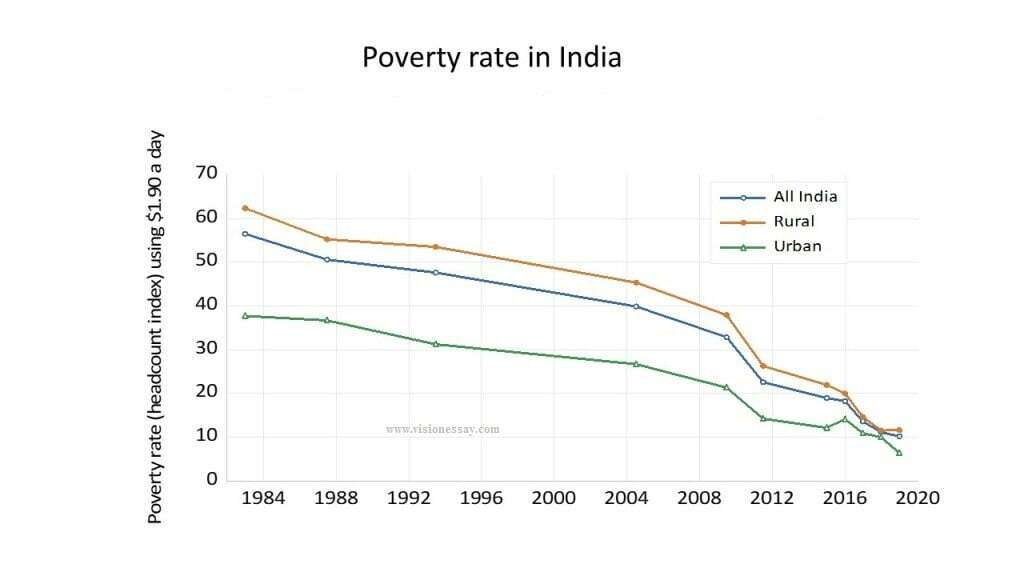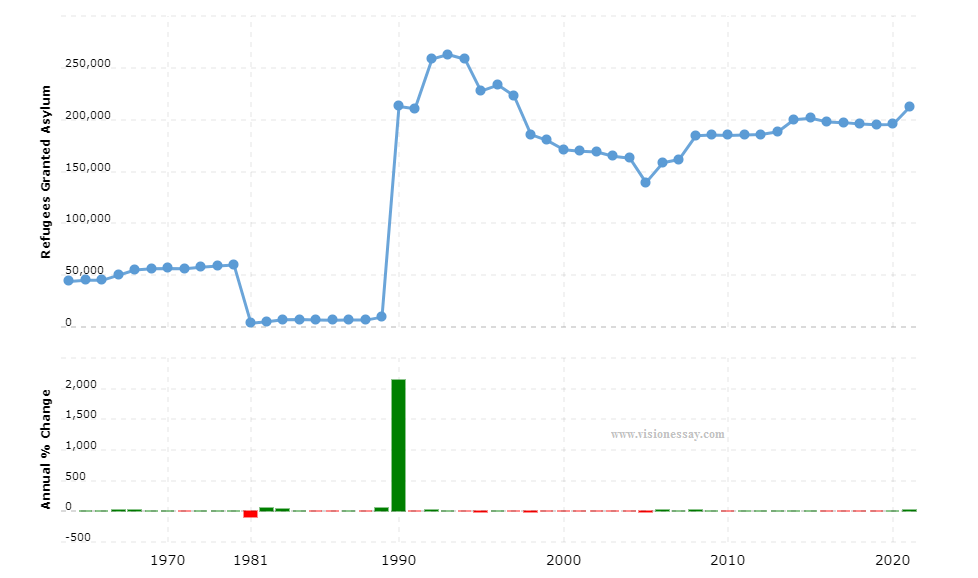
Introduction
The population of India is increasing rapidly. In a critical turn of events, India might have previously overtaken China as the world’s most populated country. India’s population was 141.7 crore as of the finish of 2022. That is somewhat more than 50 lahks more than the 141.2 crores proclaimed by China on January 17, when there was the primary fall since the 1960s, as indicated by true declarations.
Cause Of Overtaking China in Population
1. Huge Gap Between Birth and Death Rate
- The typical yearly rate of birth in India which was 42 for every thousand populations in 1951-61 boiled down to 28.7 per thousand in 1993. The demise rate additionally descended from north of 27 for every thousand populaces in 1951-61 to 9.3 in 1993.
- In this way, since the rate of birth has shown a little decay and the demise rate has gone down rather strongly, the enlarging hole has expanded our populace quickly.
- The complete ripeness rate (normal number of youngsters conceived per lady) descended from around six in the fifties to 3.5 in 1992-93. However, for a decade, the typical family size has remained at 4.2 youngsters.

2. Marriage in Small Age
- Youngster relationships have been extremely normal in India. As per the 1931 census, 72 percent of relationships in India were performed before 15 years old and 34 percent before a decade old enough.
- The mean age at marriage of females expanded from 13.1 in 1901 to 13.2 in 1911, 13.1 in 1921, 13.7 in 1931, 14.7 in 1941, 15.6 in 1951, 16.1 in 1961, 17.2 in 1971, 17.6 in 1981 and 18.4 in 1991.
- Against this, the mean age at marriage of males expanded from 20.0 in 1901 to 20.7 in 1921, 19.9 in 1951, 21.4 in 1961, 22.2 in 1971, 22.6 in 1981, and 22.9 in 1991.
- In 1994, the mean age at marriage was estimated to be 19.3 years.
- If we relate fertility rates with age groups, we find that as the age group increases, the fertility rate decreases.
3. High Illiteracy
- In India around 36% of guys and 61% of females are uneducated.
- In India, the male literacy rate is 63.86 while the female education rate is 39.42 in 1992.
- Family arranging has an immediate connection with female instruction, and female education is straightforwardly connected with age at marriage, the general status of ladies, their ripeness and newborn child death rate, etc.
- In the event that all kinds of people are taught, they will handily figure out the rationale of arranging their family, however, if both of them or the two of them are unskilled, they would be more standard, counter-intuitive, and strict learning.
4. Fertility Rate
- Today, the typical Indian lady is supposed to have 2.0 youngsters in the course of her life, a fertility rate that is higher than in China.
- Each strict gathering in the nation has seen its richness rate fall, including the greater part Hindu populace and the Muslim, Christian, Sikh, Buddhist, and Jain minority gatherings.
- Muslims actually have the most noteworthy fruitfulness rate among India’s significant strict gatherings, yet the holes in childbearing among India’s strict gatherings are by and large a lot more modest than they used to be.
5. Hot Climate
- One reason for the quickly rising populace in India is its warm environment. Because of the warm environment, development comes at an early age in young men and young ladies, because of which they bring forth their kids at an early age. This is one of the fundamental purposes behind the populace blast.
- Warmer temperatures can lead to longer growing seasons and higher agricultural productivity, which can support increased population growth.
- Hot climates can lead to several health problems, including heat exhaustion, heat stroke, and dehydration, particularly among vulnerable populations such as children, elderly people, and those living in poverty.
6. Poverty
- Because of neediness, the populace is expanded by the unfortunate groups of our country. Individuals who live in slums, utilize their kids as a device, to bring in cash, consequently, they generally attempt to expand the number of youngsters in their families.
- Poverty often deprives people of access to education, which in turn affects their understanding of family planning and contraception. Without education, people may not have the knowledge or resources to control their fertility, leading to larger families.
- Poor families may not have access to adequate healthcare, including family planning services, prenatal care, and infant and child healthcare. This can lead to high infant and child mortality rates, which in turn can contribute to larger families.

7. Arrival OF Refugee
- The population is especially expanded because of the nonstop appearances of evacuees in India.
- At the time of the division of India and. Pakistan in 1947, more than 1 crore refugees came to India.
- In 1962 at the hour of the assault on China, an immense number of Tibetan outcasts came to India.
- Essentially, in 1971, more than 1 crore Bangladeshi outcasts, came to India and even today this issue has as yet proceeded.
- More than 5 lakhs Tamil refugees had come to India due to the Sri Lankan Tamil problem. All these are responsible for the population explosion.

Also Read: Use Of Technology In Agriculture in 2023
Effect Of Overpopulation In India
1. Employment
Creating work for a huge population in a nation like India is extremely challenging. The quantity of ignorant people builds consistently. The joblessness rate is accordingly showing a rising pattern. Adding to these commitments was the COVID-19 pandemic which drove millions onto the edge of neediness and joblessness.
2. Labour Use
The quantity of jobless people is on the ascent in India because of the financial downturn, slow business advancement, and extension exercises.
3. Resource Utilization
Land regions, water assets, and woods are overtaken advantage of. The developing populace could represent a danger to the previously existing environment, as the number increments utilization increments put weight on regular assets which could prompt a lack of water and food.
4. Decreased Production and Increased Cost
: Food production and appropriation have not had the option to find the rising populace and thus the expenses of creation have expanded. Expansion is the significant outcome of over populace.
5. Pressure on Structure
Improvement of infrastructural offices is tragically not staying up with the development of the population. The outcome is the absence of transportation, correspondence, lodging, instruction, medical services, and so forth. There has been an expansion in the number of ghettos, packed houses, gridlock, and so forth.
6. Income Conveyance
Notwithstanding a rising populace, there is an inconsistent dispersion of pay and imbalances inside the nation extend. Because of an inordinate number of people, the occupation isn’t esteemed properly which could fundamentally cut down the worth of the ability.
Step To Control Population In India
1. Spreading of Education
Illiteracy is one of the vital explanations as referenced over, the public authority is making various strides for both grown-ups and kids to seek their schooling for nothing from the government foundation, this can prompt remarkable development in the country’s proficiency rate and move more people to approach to learn and grasp the outcomes of overpopulation.
2. Family Planning
Family arranging is another couple of step helping towards controlling the populace. Great family arranging can carry solidness to a people’s life.
3. Increasing Welfare and Status of Women
In many parts of our general public, ladies are as yet treated as peons. They are not permitted to seek training and consequently consume their time on earth accomplishing family work. Nonetheless, rather than binding ladies to house obligations and allowing them to study can end up being valuable as it could add to the developing status of the ladies in addition to an extra type of revenue.
4. Free Distribution of Condoms among Poors
Because of dithering among the poor in regard to contraceptives. The public authority and Medical clinics ought to meet up to sort out camps to circulate as well as make individuals mindful of contraceptives and their advantages.
5. Increasing the Health Care Centers for Poors
The Government ought to likewise zero in on expanding free medical care communities, so people can get themselves tried and disinfected if necessary.
Conclusion
Starting around 2023, India has surpassed China as the world’s most crowded country, with a populace of over 1.4 billion individuals. While the number of inhabitants in the two nations surpasses 1.4 billion, India’s populace is somewhat youthful contrasted with China’s, with just 7% of India’s populace matured 65 and more, contrasted with 14% in China and 18% in the US. India’s young populace might actually prompt a segment profit, as the nation has a huge working-age populace that could drive monetary development. Generally speaking, India’s surpassing of China in populace is a critical occasion that features India’s segment shift and its possible effect on the world economy and society.
Frequently Asked Questions (FAQs)
Does India’s population overtake China?
According to UN population estimates, India has surpassed China as the world’s most populated nation, marking the biggest upheaval in global demography since records have been kept.
Which country will have the highest population in India in 2023?
India has surpassed China to become the world’s most populated nation, according to the most recent figures. India has overtaken China as the world’s most populated nation with a population of nearly 142.86 crore, a difference of over 29,56311 lakh.
Why is India so populated?
That’s because a major portion of India’s development is rooted in the past and is fueled by “population momentum,” which is the propensity for a population to continue increasing even if fertility declines since there are more prospective moms now than there were when fertility was greater.
Which country has no 1 population?
1.India-1,422,750,470
2.China-1,425,830,081
3. United States-335,903,903
4.Indonesia-280,829,472
5.Pakistan-231,731,196
Sources:
- India overtakes China to become world’s most populous country | India | The Guardian
- How India’s population exploded to overtake China’s and what’s next | CNN
- World Population Day: India will overtake China in 2023, says the UN – BBC News
- India Population Overtakes China to Become World’s Biggest, Analysts Estimate – Bloomberg
